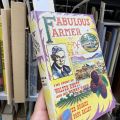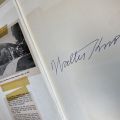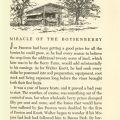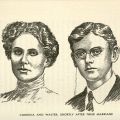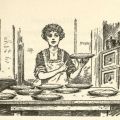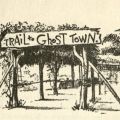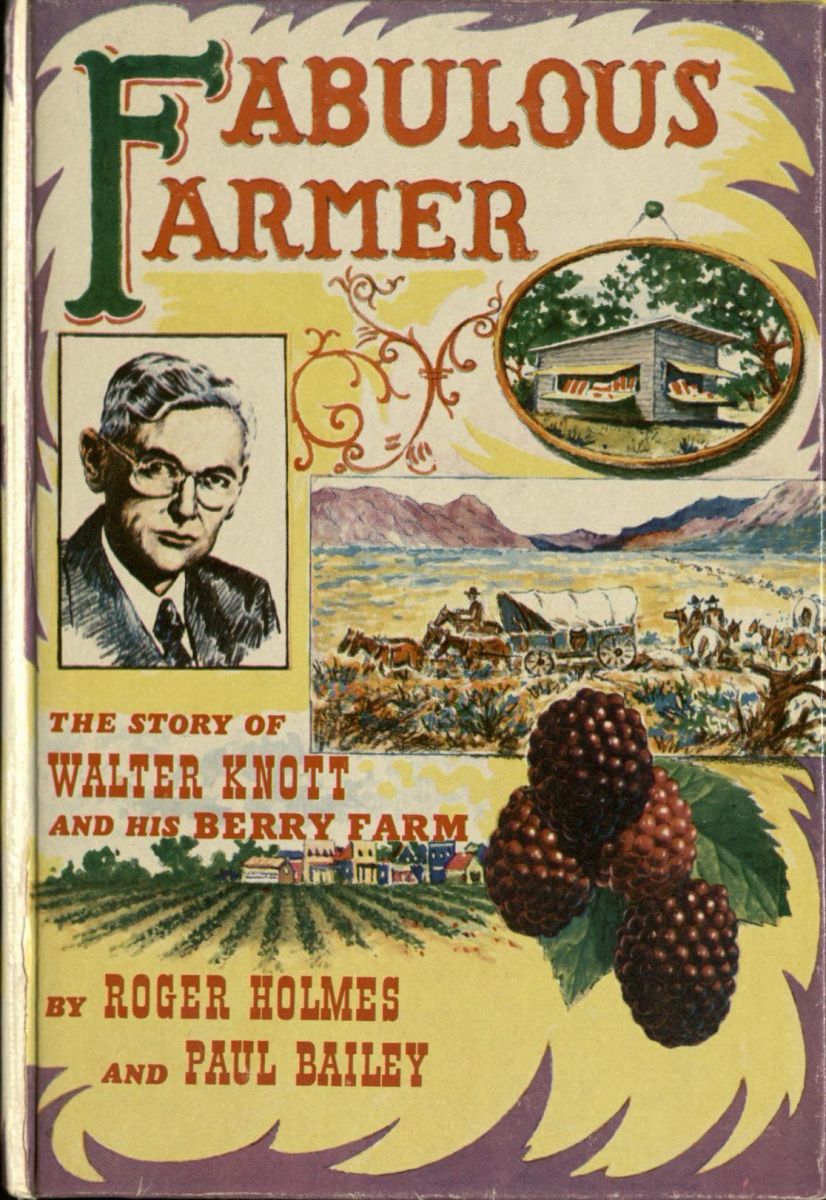
Walter Knott of Knott’s Berry Farm was born in San Bernardino, CA in 1889. He was raised by his widowed mother and elderly grandmother. Special Collections holds an autographed version of Fabulous Farmer, The Story of Walter Knott and His Berry Farm. The book, published in 1956, was authored by reporters Roger Holmes and Paul Bailey, and recounts Walter Knott’s life story. Typical of many biographies of "exceptional white men" authored in the mid-20th century, it identifies and highlights items that contributed to Knott's success in life, in this case the boysenberry and his wife Cordelia's chicken dinner. Throughout the text, the authors embrace the romanticism of the men who "tamed" the American west with the support of quietly dutiful wives, and obscure or minimize the impact of societal structures, prejudices, and other inherent advantages that aided their rise.
The book presents Walter's path to success as a challenging one. He learned farming through trial and error, including a summer in 1909 growing vegetables in the Coachella Valley, and an unsuccessful stint on a 160-acre homestead in the Mojave Desert. In describing this period of Knott's life, the authors refer to Native-American day laborers he employed with racial epithets typical of the mid-20th century, minimizing both their contributions to Knott's later successes and their personhood. In 1917 Knott, in one of his most exceptional feats, made a sharecropping deal in San Luis Obispo County. Under the deal he was able to grow excess vegetables for profit, unlike the vast majority of sharecroppers in the United States during that time, many of whom were people of color.
After the sharecropping contract expired in 1920 Walter and his family moved to Buena Park. Walter’s cousin, Jim Preston, grew berries in the area, and the two decided to become partners. They rented 20 acres on a five-year lease. Walter took to heart the lessons of his time in the Coachella Valley. Knowing he had to sell his own product, he set up his roadside berry stand in 1923. He found the “Youngberry,” a cross between a dewberry and a loganberry, being grown in Alabama, and he ordered supplies to plant half an acre. This was the beginning of the now-famous berry farm.
The oil boom of the late 1920s made the leased land Knott and Preston grew berries on more profitable to sell than rent to farmers. Jim decided to move to Norwalk, but Walter bought the land himself and stayed. In 1927, he could only afford 10 of the 20 acres. In 1929, when the effects of the Great Depression impacted the economy, land prices fell dramatically and Walter was able to add the remaining 10 acres to his purchase.
In 1933 Walter received a visit from George M. Darrow, head of US Agriculture's Bureau of Plant Industry Experimental Station in Maryland, that would send him further down the path to success. Following up on a report of a strange new enormous berry, Darrow went to Walter, who was at the time considered one of the most important berry producers in the county. Darrow was in search of a “Mr. Boysen” who was named in the original report. Walter didn’t know the man but figured Anaheim, five miles away, was a good place to start. After asking around town, they checked the phone book and found a single “Mr. Boysen”: Anaheim City Park Superintendent Rudolph Boysen.
Rudolf Boysen had once owned an orange grove and had planted six berry vines along a ditch on the property. Boysen introduced Knott and Darrow to the new owner of that property. The new owner allowed Knott and Darrow entrance to the property. “They found the berry vines all right – weed matted, and all but dead from neglect.” Boysen and the new owner ended up granting Knott permission to take the vines back to his own farm.
By 1936 Knott had nursed the original vines back to health and the fruits were a viable product, in limited quantities. Even during the Great Depression Walter found that these berries (“boysenberries” as he would later call them) were profitable at his roadside stand, often purchased by affluent travelers moving between Pasadena and Orange County's beach cities.
A small portion of the text is devoted to Walter's wife Cordelia, framing even her most significant ideas and work as supportive contributions to Walter's success. In San Luis Obispo, where Knott was a sharecropper, she produced and sold candy to local markets and saved enough to buy the family’s first car, bringing in additional income that undoubtedly made it possible for Walter to grow and sell excess vegetables for profit at his roadside stand. She also made jams, preserves, and pies that were sold alongside the produce. These products kept the family and the farm afloat in lean years. Later she began making light lunches, hot rolls, and coffee to sell at the roadside stand.
Although Cordelia never meant to enter the restaurant business, the chicken dinner she started selling in 1934 was so popular they had to expand seating almost immediately. By 1939, available seating had grown from 20 to 350, and by the mid-1950s, when Fabulous Farmer was written, the Knotts restaurant could seat 2,000 people at one time. It was the crowds waiting to be seated for Cordelia’s chicken dinner that encouraged Walter to begin building entertainment features. Construction on Main Street and Ghost Town began in 1940.



